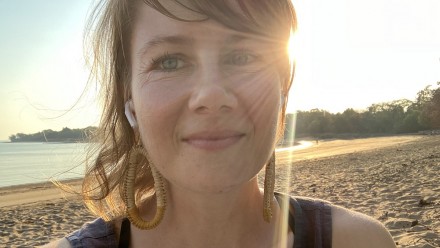Finding the sweet spot as we live with COVID19
Written by: Barb Corapi
Lockdowns, border closures and travel restrictions have contributed to COVID19 shifting from a health crisis to a far more involved economic and sociological crisis for many countries, including Australia.
“We need to be more nuanced in our approach and need to consider the ancillary issues such as employment, secure housing, and mental health,” says Australian National University (ANU) Medical School Infectious Diseases Physician and expert, Professor Peter Collignon AM.
“Acquiring COVID19 isn’t good for people at any age but if you’re healthy there’s definitely less risk for someone in their 20s compared to someone in in their 70s.”
“Where COVID19 is currently having the most impact on the Australian population, especially young adults, is socially and economically.”
This type of commentary from Professor Collignon has been unfavourable with some of his peers who believe the health implications of COVID is the only priority in decision making.
Through the national media and his own Twitter account, Professor Collignon has made clear that he believes the best way to make decisions about pandemic restrictions should be by analysing the research data and the risk of each situation. There is no ‘one size fits all’.
“The economic and social costs of lockdowns can sometimes outweigh the benefits,” he says. In the short term the results of a lock-down can be favourable but COVID is a long term game.”
“We need restrictions to be proportional to the risk. Severely restricting outdoor activities isn’t necessary as the risk is quite low. I’m not condoning mass gatherings with people cheek to jowl but outdoor exercise and small outdoor gatherings that observe distancing rules are reasonable even if community transmission in high.”
Professor Collignon predicts the pandemic will go on for another two to three years, until a vaccine is developed and delivered globally that is at least 90 per cent effective. Progress is being made with initial data from Pfizer showing their experimental mRNA vaccine to be 90 per cent effective. In addition, work is underway in Melbourne to manufacture the Astra Zeneca vaccine based on a simian adenovirus vector. Data from phase 3 studies for the Astra Zeneca vaccine are not available as at 10 November 2020, so it is currently unknown if it’s as effective as the preliminary data suggests for the Pfizer vaccine.
“I’m confident we will have reasonable access to multiple vaccines by the middle to end of next year, which will be at least 50 to 60 per cent effective, so very useful especially for high risk groups. However, they may not completely stop transmission.”
Even if Australia has access to a vaccine, life may not get back to normal for some time. Until there is a global roll out and uptake of very effective vaccines, international travel will likely still be restricted between many countries.
Logistically, there are many issues that need to be addressed to successfully roll out any vaccines, globally. The Pfizer mRNA vaccine is projected to produce enough vaccine for 750 million people by the end of 2021 – but still much less than the global population. Additionally, questions remain about maintaining an “ultra-cold” chain when transporting and storing some vaccines at -70C.
While awaiting the production and distribution of effective vaccines, Professor Collignon is an early and big believer in sewage testing. He was involved in the research that led to its implementation in Australia and an advocate for its usage as part of the COVID19 toolkit. Canberran’s have had daily analysis of sewage for the past five months.
“Not everyone with COVID19 will turn up to be tested for COVID, so sewage testing is a very worthwhile supplementary test to keep us on top of tracking the virus thereby helping to reduce the spread. It means thousands of people can be tested at one time to determine if COVID exists in an area. If it’s present, testing sites can be set-up and people informed and persuaded to get tested. It can also be effective on long haul flights to determine when some of the return travellers are infected.”
“We still don’t know all about COVID and the goal posts keep changing but the basics - like hand washing, having good cough and sneeze etiquette, keeping your distance, wearing a mask when there is community transmission especially indoors when close to others, staying at home and testing for COVID if you’re sick - go a long way to keeping people safe. These simple yet effective measures have resulted in a lot less influenza this year and will continue to help keep COVID at bay.”














